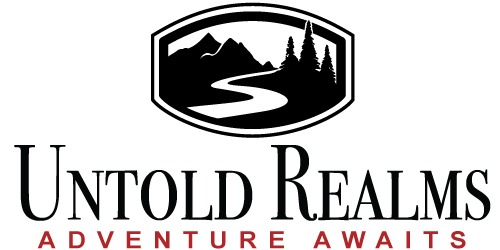In almost all fantasy roleplaying games, there are tons of different potions and elixirs that do wonderful or terrible things. But what kinds of potions are available in a low fantasy or swords & sorcery setting?
The challenge here is not to limit the players to only a few potions–it’s to be creative and come up with a number of potions that fit within the game or setting’s theme.
Healing Potions
It seems that one of the first potions any game comes up with–and players want–is a healing potion. There has been a lot of discussion on the Interwebs over the years about whether these should exist. On one side, with a system as deadly as Blades, players need some way to heal up their characters so they can keep adventuring. On the other hand, exactly because Blades is so deadly, players need to think twice about engaging in combat, and any healing takes away from that point.
That being said, even in a low fantasy game or setting, I think there needs to be some form of healing available. There is a need for something more than what any healer’s first aid would provide for wounds, or a hedge witch would make for curing basic illnesses.
So here are some of my ideas for basic healing potions for use with Blades:
Basic Healing Potion
Cost: 50 Lunas
Heals 1d2 points of damage.
This is a basic potion, created from simple herbs and compounds. Any hedge witch, village healer or city chemist can make it. This potion can be stretched to include a number of different potions for different diseases or maladies within a fantasy story–have fun with it.
Magical Healing Potion
Cost: 1,000 Lunas
Heals 1d6 points of damage.
This is a magic potion, created by a sorcerer. When drinking the potion, the imbiber must roll 3d6. On a 16+, he takes 1d3 points of damage instead. If the creator is a priest as well, he may require some form of obeisance to his god. No matter who makes it, it will be very rare and hard to come by.
The key here is to keep the benefits small, and the effort to make or find them high. They should have a great story behind them, and not just be something left to a random dice roll to find in a village shop.
Evil Poisons
Right behind healing, players always want to know about the other side of the coin: poisons! Just do a search on DTRPG and you will see tons of supplements that talk about poisons and their effects. This is actually a good thing to me–it helps give a lot of flavor to an already dark setting.
The basic poisons that should be available might include:
Basic Poison
Cost: 100 Lunas
Basic poison, per the Blades rules. There are tons of different ways to come up with poisons in a dark setting, from simple chemicals to the blood of rare creatures.
Weapon Poison
Cost: 150 Lunas
A more extreme form of poison. It is usually thick enough to coat a weapon’s blade. If the attacker hits a victim and causes damage, the poison takes effect. The victim must pass a 3/ST test, or suffer 2d6 damage. The user might also have to pass a 3/DX test at some point to avoid poisoning himself!
Poison Gas
Cost: 300 Lunas
This poison is contained in a glass bottle. When broken, the poison affects everyone within a circle 15′ in diameter. The poison cases 2d6 damage to anyone who fails a test of 3/ST. A 3/DX test might be allowed to jump out of range–or not.
As mentioned in the core rules, some poisons only have an initial effect. Others, however, may have an initial effect (like that mentioned above), plus cause additional damage each day until cured or magically healed. After that, different names, types and characteristics can be added to give color and story elements to these poisons.
Where To Go From Here
Part of that will be determined by what C.R. Brandon publishes for the second half of Blades–Dark Magic. I am reluctant to write up much more than these basic potions until he does that–I want to make sure what I have falls in line with what he does.
That being said, the challenge is going to be coming up with creative potions for Blades that fit in with the low or dark fantasy theme–no resurrection potions, no potions of everlasting life, etc. (Of course, rumors of those potions could be the hooks for adventures in their own right!)
One obvious way to do this is by taking the basic list above, and creating different versions of them to create color and story hooks. For example, a poison from one city may be a poison that causes cramps and convulsions. Another from a different city might cause convulsions, but with bleeding from the mouth and nose. Same game effects–but with different descriptions and stories.
Another way is to tweak the possible side effects or sheer riskiness of using the potion. Like the one above, the more benefits it may have, the greater the risk that there will be damage caused by its use. Another option is to make the potion risky to create–and drive availability down and cost up.
Yet another way is to make potions difficult to find. This gives a lot of hooks and opportunities to the Referee to create adventures and stories as a side adventure to an existing one.
No matter what, I am really looking forward to what C.R. will list in Black Magic. It will be interesting to see what additional rules he comes up with for Alchemy!
Marko ∞
(Originally published on middle-lands.com, on 3/29/2019.)
